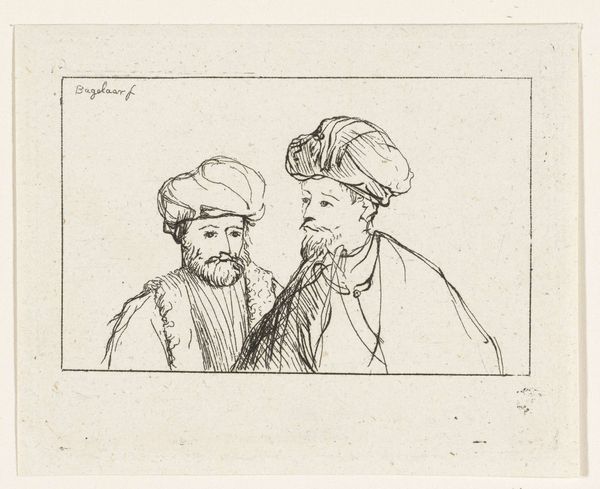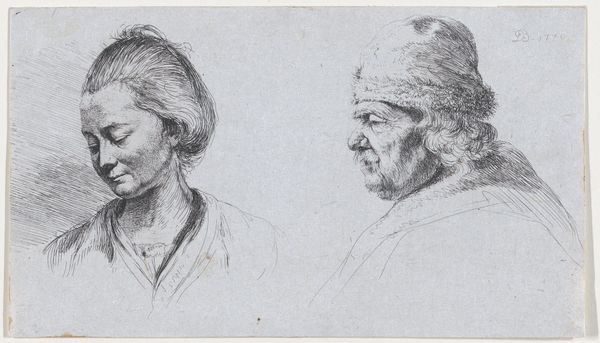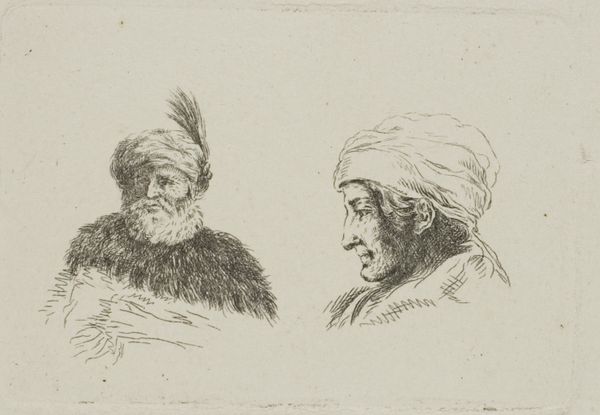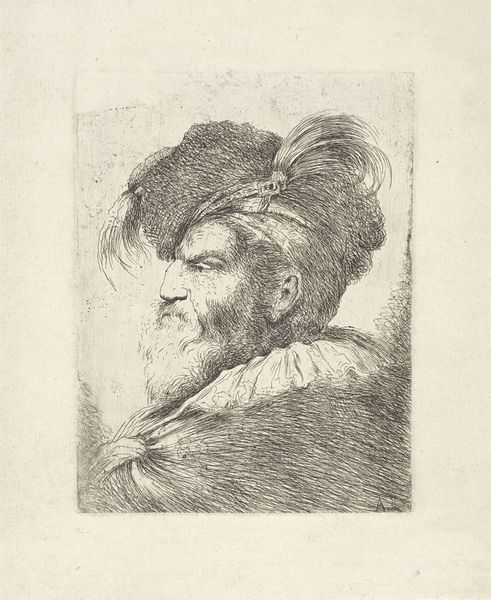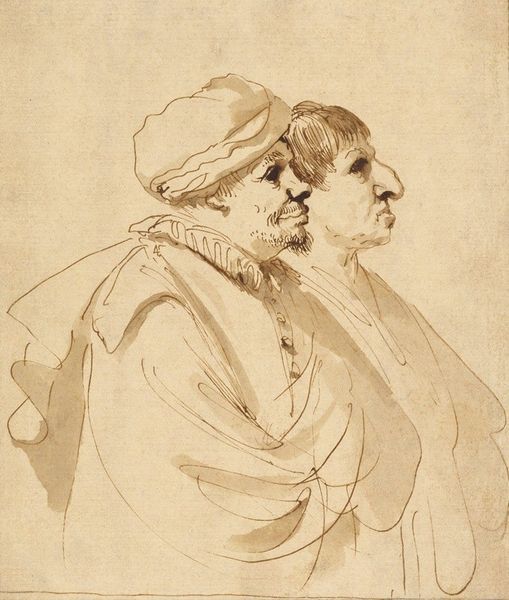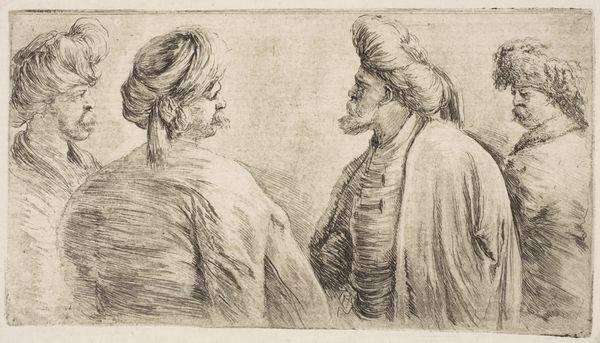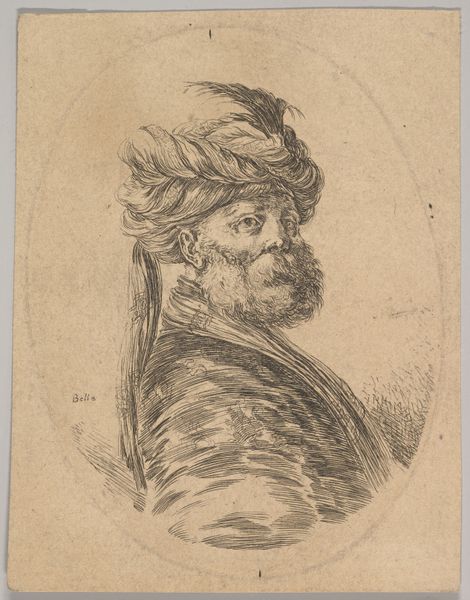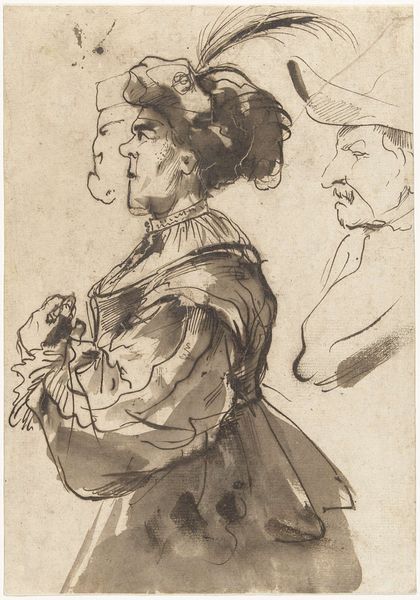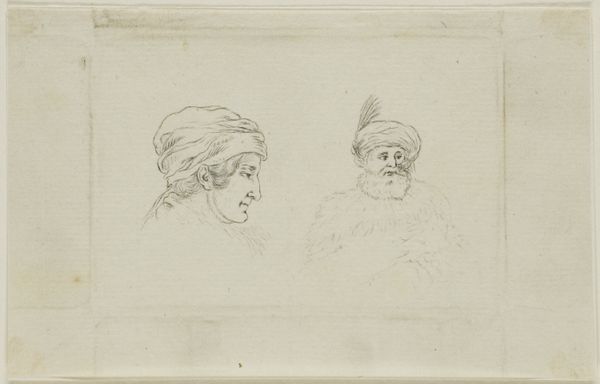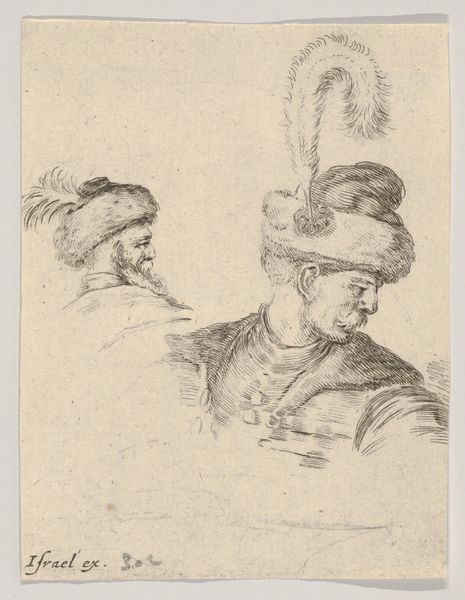
drawing, print, etching
#
portrait
#
drawing
#
baroque
# print
#
etching
#
pencil sketch
#
charcoal drawing
#
portrait reference
#
pencil drawing
#
portrait drawing
#
genre-painting
Dimensions: height 86 mm, width 90 mm
Copyright: Rijks Museum: Open Domain
Curator: Here we have Stefano della Bella's "Twee Turkse mannen met snorren en tulbanden," which translates to "Two Turkish Men with Mustaches and Turbans," dating somewhere between 1620 and 1664. It's an etching, currently held here at the Rijksmuseum. Editor: My first thought? Intricate and vaguely unsettling. There’s a certain weight to their gaze, and those elaborate turbans seem almost… top-heavy. Curator: Yes, unsettling is a good word. These aren’t portraits in the typical sense; more like studies in otherness. Della Bella, like many artists of the period, was fascinated by exoticism, and etching allowed him to disseminate these images widely. It allowed access for middle class individuals to view people from other nations. Editor: Those turbans, though – they practically demand attention. They're enormous, aren't they? What could those symbols signify to Della Bella's audience? Power? Piety? Wealth? Curator: Undoubtedly all three! The textiles, the sheer volume, speak to a certain status, access to materials, and, by extension, trade routes and colonial encounters. Think about the labor involved in acquiring and shaping those textiles. And of course, the act of printing makes the image more accessible. Editor: It’s interesting to consider the "Turkish man" as a figure – it evokes historical perceptions. Beyond immediate observations, are these renderings authentic? Or impressions manufactured from hearsay? Curator: Likely a combination. Della Bella probably drew from sketches or other sources, so these aren’t exact anthropological documents. They are interpretations, filtered through a European lens. The very act of creating and circulating such images reinforces existing perceptions and contributes to a growing cultural understanding of the ‘Orient.’ Editor: Absolutely. You look at those faces again, the set of their mouths, the detail in the facial hair, the crosshatching Della Bella employed: there's real emotional nuance here, which only underscores my original point about feeling unsettled! Curator: Yes, Della Bella offers not just details about costume or adornment, but invites speculation about what life circumstances allowed these specific men to obtain or craft such clothing. This piece, created by labor, consumed through images. The circle of production comes complete. Editor: Contemplating on Stefano della Bella’s cultural depictions provides such richness in both context and aesthetic engagement. Curator: Absolutely; considering this piece's cultural context and inherent complexities highlights not only a valuable historical artifact, but equally one of great social significance.
Comments
No comments
Be the first to comment and join the conversation on the ultimate creative platform.

